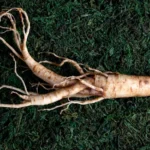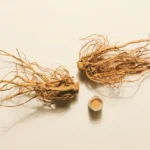Rare Medicinal Plants and Their Uses
Rare medicinal plants have been used for centuries to treat various ailments. These plants, often hidden in remote forests, hold incredible healing properties. From pain relief to boosting immunity, their uses are both diverse and effective. In this post, we explore some unique medicinal plants, their unique characteristics, and their importance in modern medicine.

Golden Root: The Natural Energy Booster
Golden Root, also known as Rhodiola Rosea, thrives in cold, mountainous regions. This plant has been celebrated for its ability to reduce stress and enhance energy levels. Its adaptogenic properties make it a popular choice for fighting fatigue. Moreover, it supports mental clarity and concentration. By increasing oxygen uptake, Golden Root benefits athletes and individuals seeking physical endurance. Incorporating it into daily routines can significantly improve overall well-being.
Blood Flower: A Potent Antimicrobial Agent
Blood Flower, scientifically known as Asclepias curassavica, is another rare plant with exceptional medicinal uses. Traditionally, its extracts have been used to treat infections and wounds. Modern studies reveal its potential as a natural antimicrobial agent. Blood Flower’s active compounds combat bacteria and fungi effectively. While powerful, careful handling is essential, as improper use can lead to toxicity. Its ability to heal makes it an asset in herbal medicine.
Dragon’s Blood: Nature’s Healing Resin
Dragon’s Blood, derived from the Croton lechleri tree, is renowned for its vibrant red sap. This rare resin offers numerous health benefits, particularly for skin ailments. It accelerates wound healing, reduces inflammation, and protects against infections. Its use extends to gastrointestinal health, where it soothes ulcers and supports digestive function. Dragon’s Blood resin highlights the incredible potential of natural remedies for modern health issues.
Pitcher Plant: The Digestive System Protector
The Pitcher Plant, often associated with carnivorous species, possesses remarkable medicinal qualities. Native to wetland areas, it has been used traditionally to address digestive problems. Its extracts can relieve stomach pain, nausea, and bloating. Researchers are also exploring its role in combating certain viral infections. This plant’s dual role as a predator and healer showcases nature’s fascinating adaptability and resourcefulness.
Snow Lotus: A Symbol of Vitality
Snow Lotus grows in the icy terrains of the Himalayas, making it one of the rarest medicinal plants. Known for its anti-inflammatory and antioxidant properties, it helps combat aging and chronic conditions. It has been used in traditional Chinese and Tibetan medicine for centuries. Its therapeutic benefits include enhancing immunity, improving circulation, and relieving joint pain. The Snow Lotus embodies resilience and healing, offering hope for countless patients.
Conclusion
Rare medicinal plants, such as Golden Root and Snow Lotus, highlight nature’s pharmacy at its finest. These plants not only provide effective remedies but also inspire modern pharmaceutical advancements. Protecting and sustainably harvesting these resources is crucial. Their potential can revolutionize medicine and improve lives worldwide. Understanding their uses ensures that we value and preserve these treasures for generations.



